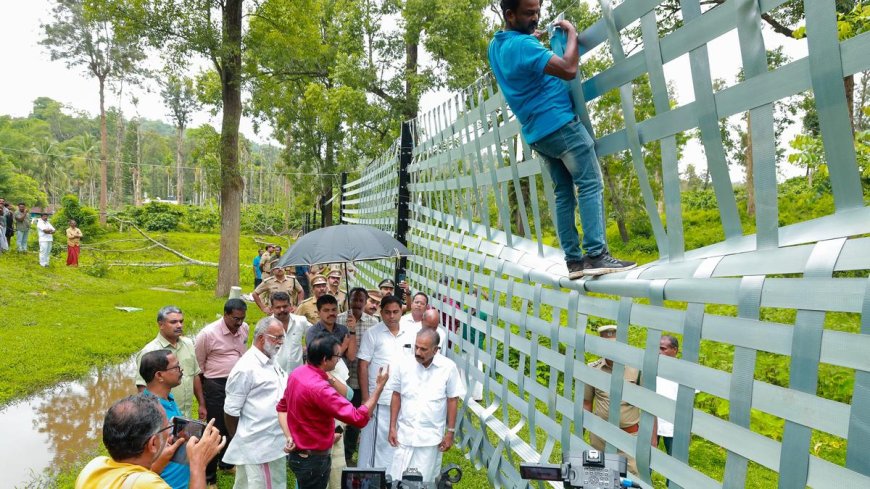‘Ele-fence’ gets ready in Wayanad to keep wildlife at bay

THE installation works for the country’s first Artificial Intelligence (AI)-based smart fence project, called ‘Ele-fence’, are under way in Wayanad to mitigate the accelerating human-wildlife conflict in the region, reports The Hindu.
The pilot project is being installed by White Elephant Technologies, a Kochi-based R&D firm with support from the Kerala Forest Department at Chelakkolly, near Pambra, in Chethalth forest range of the south Wayanad forest division.
The proposed 70-metre Ele-fence incorporates an effective blend of real-time monitoring as well as preventive and protective features, said Parrakkal Mohan Menon, CEO, White Elephant Technologies.
The design thinking elements also involved a deep study of elephant behaviour in typical conflict-prone situations, said Mr. Menon.
The fence has been installed with six-inch-wide steel girders, each 17 feet high. The girders are concreted at four feet depth and welded with steel bars under the ground level for strength, he said.
The fence is duly equipped with AI-based logical trip wires, which enable early warning of intrusive elephant movements, he said. There are 4K cameras for real-time video and audio disseminationto control rooms and the Rapid Response Teams of the Forest department.
The fence has sound and alarm lights installed to keep the elephants from approaching the regions around the barrier.
It also has built-in features that would send light and sound alerts to pedestrians and motorists to warn them of elephants’ presence in the area. Apart from the loaded AI features, Ele-fence also uses lasher belt technology, which would prevent elephants from physically breaching the fence, Mr. Menon added.
When the animal reaches within 50 to 60 metres range of the fence, multiple cameras would capture the live visuals and trigger alarm bells, warning local people of the elephant’s presence.
The system would alert the nearest Rapid Response Team (RRT), forest office and the central forest control room with real-time video of the fenced area.
The fence is likely to be commissioned by the end of July, Mr. Menon added.
“We have experimented with different methodologies such as elephant-proof trenches and walls, solar fencing and solar hanging fencing as well as rail fencing to protect human habitats from wildlife incursion,” D. Jayaprasad, head of the forest force told The Hindu.
However none of them were 100% effective, Mr. Jayaprasad said. We expect the latest project to address the issue and once it is found effective, it would be expanded to the vulnerable parts of the State, he said.
